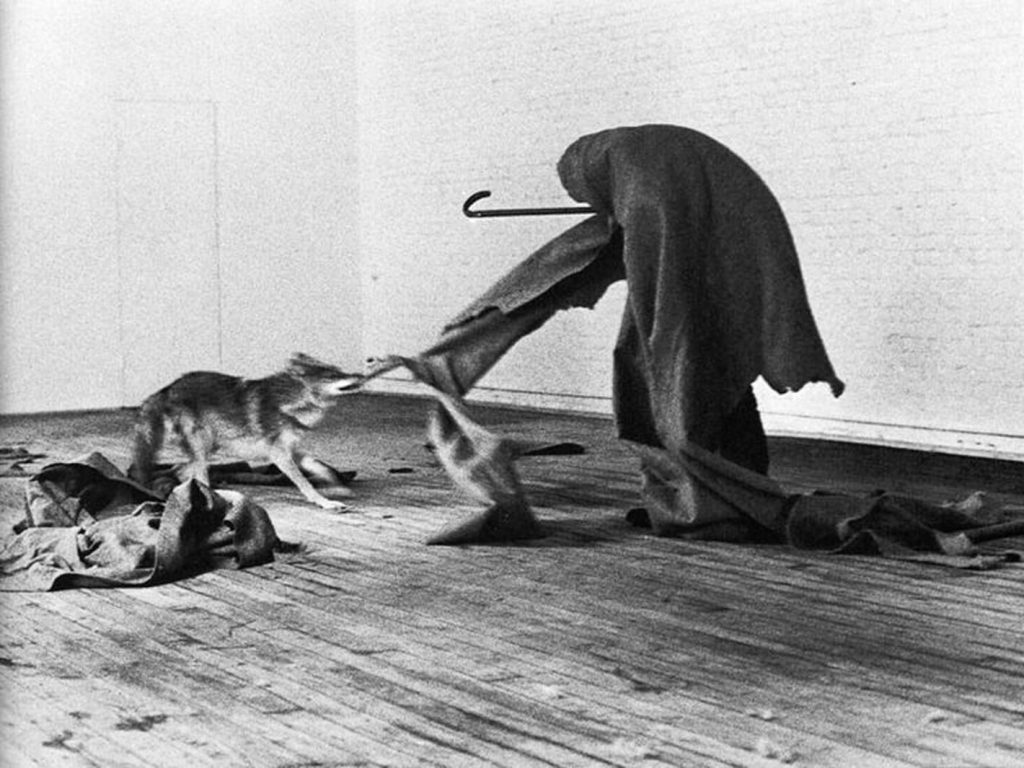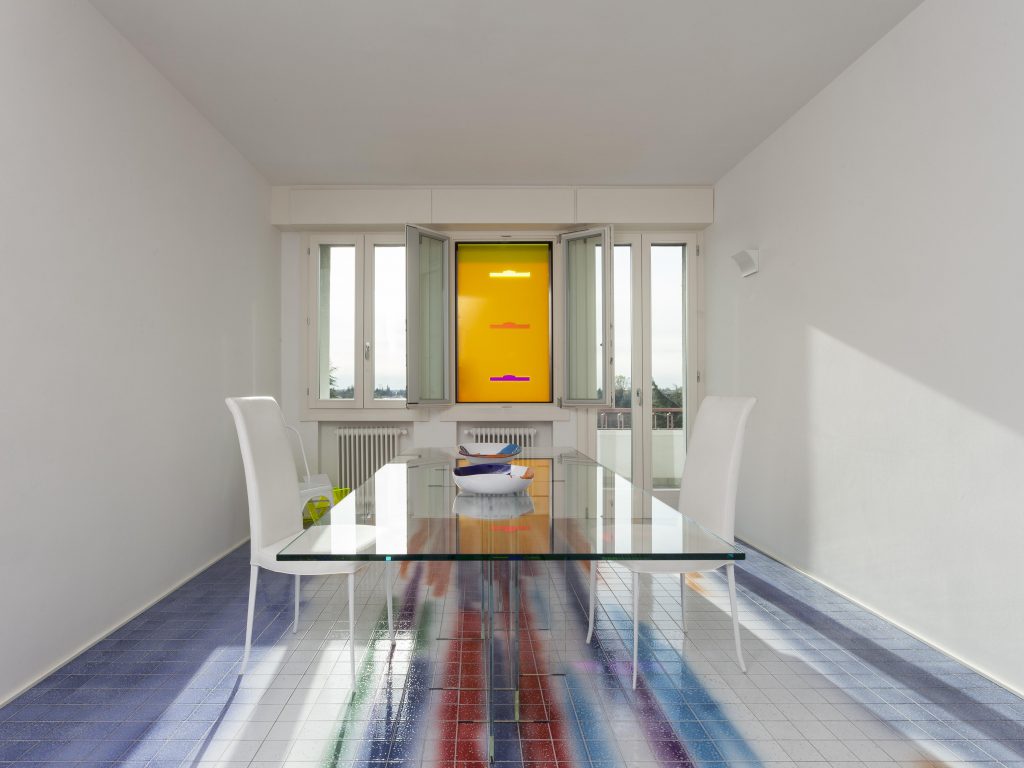Is it possible to imagine the invisible?
Probably it depends on which type of invisible you are trying to visualize.
In general, we are brought to think that only what we can see exists, so that the invisible, which normally cannot be caught by the eyes, is part of a big and multiform whole that is the unreal.
But what is invisible is not always a synonym of nonexistent.
When we are talking about the last journey we did, it often happens that during the passionate narration someone interrupts with « Yeah ok, but do you have a photo? » The world we live in is used to having the objective confirmation of what is around us immediately, what happens, what it is. And yet, for years, centuries, the passionate tale was enough to visualize the invisible.
Only vaguely it’s possible to imagine how it seemed fantastic and impossible the wonderful travelogue that is “The Million” of Marco Polo. A reading which, in absence of other tangible proof, it had to appear visionary for the large number of oddities it contained. And so, in the minds of the readers these remote worlds, that otherwise couldn’t be seen, had to assume personal images.
The invisible therefore can exist and can be seen.
Marco Polo didn’t write anything about his voyage, but he dictated to his cellmate Rustico da Pisa what he had seen and also everything he «did not see, but heard from people»; in short, memories of memories.
And so, travel and memory meet and merge to create alternate realities.
“I remember much of what I have seen”
This quote comes from Karina Puente, Peruvian architect and illustrator, who in 2015 started the project [In]visible cities.
The title leaves no doubts, we are seeing the desire to illustrate the visionary book, written in 1972 by Italo Calvino: “The invisible cities”.
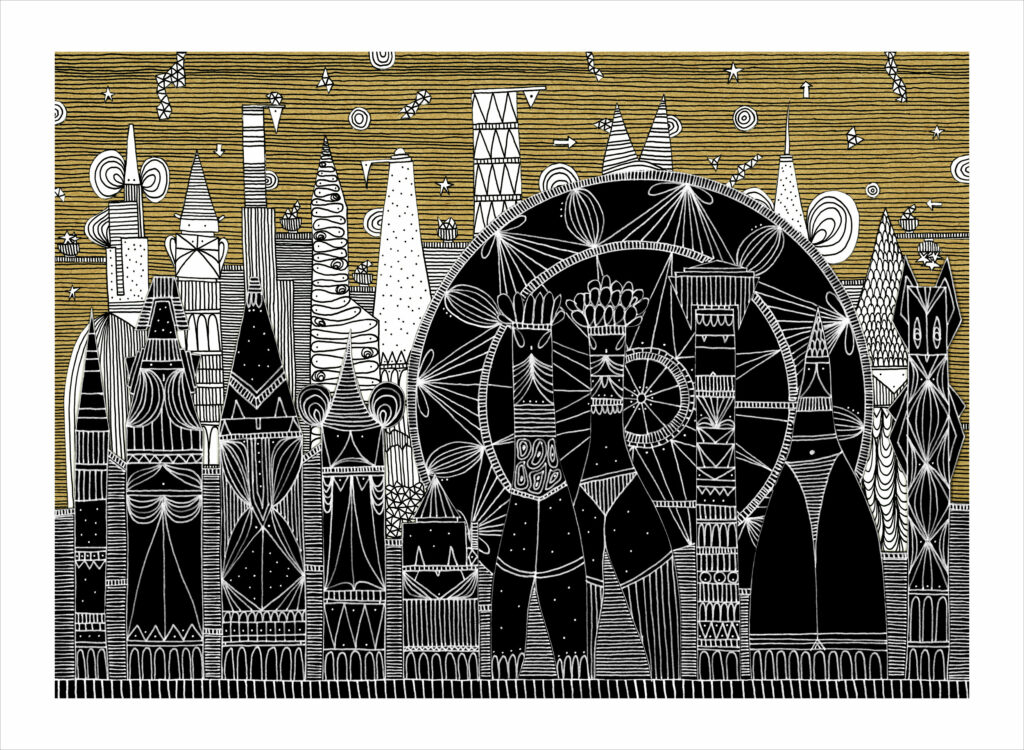
But is it possible to create illustrations for a book that talks about the invisible?
Yes, it’s possible, and there have been many artists that proposed different solutions, from figurative to abstract. Among them, Karina Puente offers a uniform and modern vision which aims to give an image to the 55 feminine cities which Marco Polo had to describe every evening to the insatiable Kublain Kan.
“Maybe when I read Calvino’s cities I remember much of what I have seen.”
This is how the artist’s phrase is completed, who, since her early childhood, used to travel and live in very different cities. Also Puente, just like Marco Polo when he returned to his homeland, reflects in the illustrations what she has been, to the point of finding “a past that they didn’t know they had anymore“.
Her invisible cities are composed of buildings, streets and details blended and repeated in a space-time loop for which, at the end, you get lost inside, just like in a city that you have never visited before.
Also Calvino wrote the last love poem to the city as a heterogeneous catalogue of places that in reality are soon rediscovered as integral parts of “a unique city in a continuous city“.
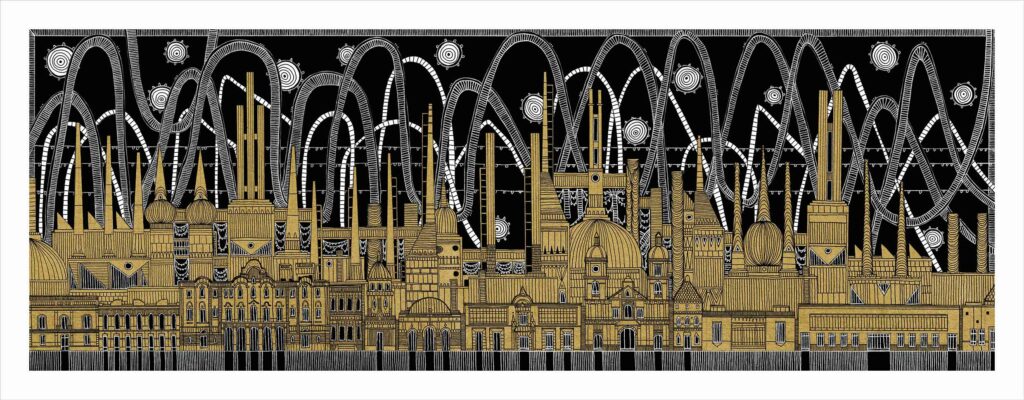
The creative modus operandi of Calvino and Puente are similar. They both recall to the memory what they were, blending it with who they are during the creative action. For Calvino the book became a personal diary that followed his moods and reflections for which “all turned into images of city: the books that I read, the art exposition I visited, the discussions with my friends”.
Karina Puente, re-read multiple times the city that she was preparing to represent, sometimes the inspiration came in a week, other times it needed much more time to settle, to assume a visual form.
Her visions are not always didactic, there are cities that are closer to the calvinian’s descriptions and others that arise from personal suggestions.
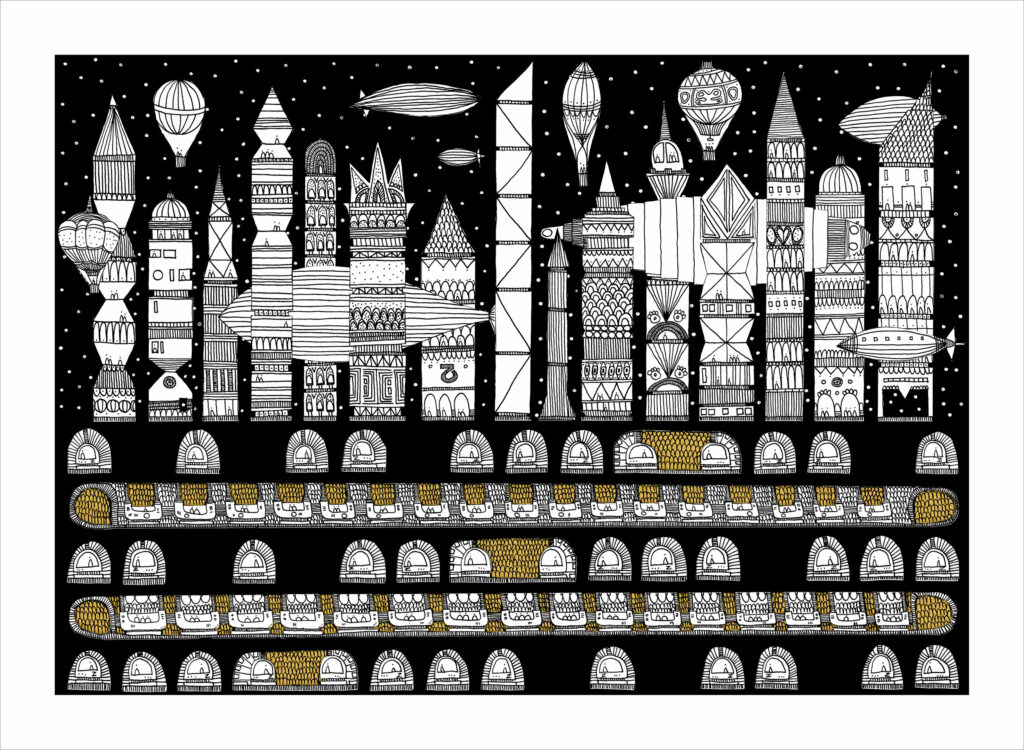
Zirma, the second sign’s city, is very close to the literal text; there are skyscrapers, flying airships and underground trains full of people, everything obsessively repeated as in Marco Polo’s memories. In this sign’s repetitions there is an anomalous detail, in the Puenta’s Zirma it is snowing because it was done during the Christmas season.Maurilia is the city that shows its new modern face, never forgetting what it was; old city and new city coexist and at the same time deny each other, because between yesterday and today there are no connections except the coincidence of both having the same name.
The artist’s Maurilia represents this dualism allowing to the new city, dotted with white and black skyscrapers, to be at the center of the scene while along the edges stretches the golden old city, imagined as a postcard of Venice.
In this combination of buildings, it appears a white full moon that lightens Lima during the foggy night when Karina Puente was working on the drawing.

The Peruvian artist’s illustrations are generated in the same way in which cities are developed, layers of paper that overlap and drawings that revolve around what already exists, everything in a clean trichromia of black, white and ochre.
A mixed technique that goes back to the architectural models so loved during the artist’s youth.
Puente was several times accused of presumption, «how do you make visible the invisible! »; a sacrilege we all bear the guilt when, reading “The invisible cities”, we imagine ourselves our inner city.
Our home.
«Sire, now I have told you about all the cities I know. »
«There is still one of which you never speak. »
Marco Polo bowed his head.
«Venice, » the Khan said.
Marco smiled. «What else do you believe I have been talking to you about? »




